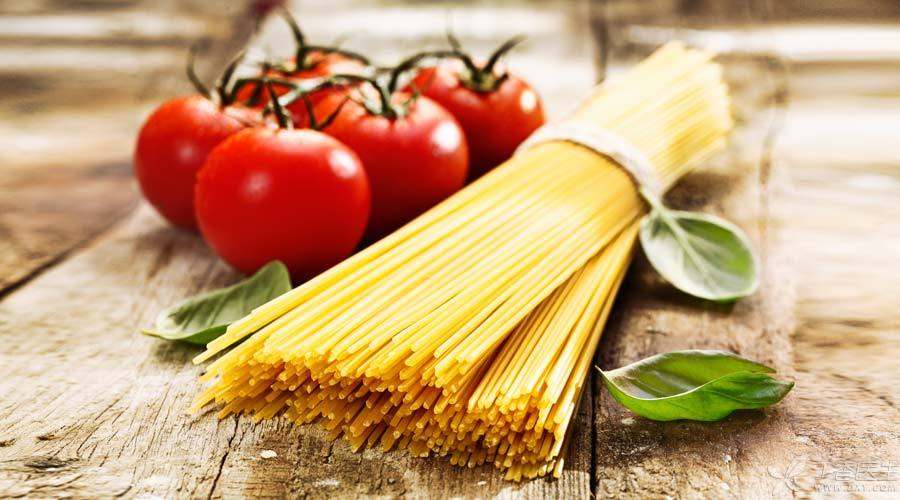
People generally think that pasta is rich in carbohydrates such as starch (commonly known as sugar) and has high energy. Eating pasta is easy to make people fat.
More and more people, in order to maintain a healthy weight, tend to choose the dietary pattern of [low carbon water, high protein], turn pale at the mention of staple food, and eat starchy food carefully.
In fact, we do suggest that people who lose weight should choose a hypoglycemic diet and control their carbohydrates. However, this does not mean that all rice and pasta should not be eaten. At least, there is a special kind of pasta-pasta (spaghetti, macaroni), which is still the recommended staple food choice.
Is the blood sugar reaction what?
Carbohydrates in food are digested and decomposed into monosaccharides when eaten into the human body, which increases the blood sugar of the human body and produces satiety, which is the process of blood sugar reaction.
Glycemic index (GI) is an indicator that reflects the degree of blood sugar increase caused by food.
- Foods with GI < 55 are called low GI. GI > 75 is called high GI; GI is between 55 and 75, which is called medium GI.
Foods with low GI are usually not easy to cause large fluctuations in blood sugar, and their satiety is relatively strong and they are not easy to be hungry.
Foods with high GI are easy to cause higher postprandial blood sugar and hunger is fast.
Why is blood sugar reaction closely related to weight loss?
When the blood sugar of the human body rises, insulin will begin to play a role, making the blood sugar return to normal. During the action of insulin, part of the blood sugar is converted to fat synthesis.
If the blood sugar control is poor and unstable, the faster it is to drop from hyperglycemia, the easier it is to feel hungry and gain weight.
We have always suggested that everyone should reduce the consumption of refined white rice and flour, and at the same time pay attention to increasing whole grains and coarse cereals. On the one hand, the nutrition retention of whole grain coarse cereals is more comprehensive, on the other hand, it is precisely because their GI value is lower than that of refined white rice and flour.
Pasta: Pasta with Hypoglycemic Response
Spaghetti, that is, spaghetti, macaroni and macaroni, is not made of ordinary wheat flour, but is made of hard wheat.
Hard wheat has higher protein content and tighter structure than common wheat, so pasta tastes harder, does not elastic teeth at all, is not strong, and is resistant to cooking and difficult to cook soft.
The GI for pasta is 58. By comparison, the GI for pure glucose is 100, the GI for rice is 83, the GI for steamed bread is 88, the GI for whole wheat bread is 69, and the GI for buckwheat noodles is 59.
Spaghetti and buckwheat noodles are relatively close, which is beneficial to controlling blood sugar and increasing satiety.
A large sample study shows that pasta consumption in Italy is negatively correlated with residents’ body mass index, waist circumference, waist-hip ratio, obesity incidence, etc.
In other words, people with reasonable diet energy and spaghetti habits have a healthy weight, a thinner waist circumference, a smaller waist-to-hip ratio and a lower incidence of obesity.
However, this does not mean that we can enjoy spaghetti and lose weight at the same time, but reminds us that there is no need to deliberately restrict eating spaghetti.
Health Recommendations: Mediterranean Diet Patterns
Spaghetti has a long history of eating and is one of the traditional components of [Mediterranean diet].
When it comes to [Mediterranean diet], you may not know much about it. Although, it seems to be much lower-key compared with hot nuts, olive oil and red wine.
People who adopt this diet pattern have very low incidence and mortality of cardiovascular and cerebrovascular diseases, which has aroused widespread concern in various countries. Other studies have found that this diet pattern is also helpful to prevent diseases such as Alzheimer’s disease, Parkinson’s disease and breast cancer.
Characteristics of Mediterranean Dietary Structure:
- Mainly vegetable foods, including cereals, fruits, vegetables, beans and nuts, olive oil or rapeseed oil instead of butter, other spices instead of salt, red meat (i.e. Pigs, cattle, sheep and their products, etc.) only a few times a month, poultry meat or fish twice a week, moderate amount of milk and dairy products, moderate amount of red wine (not mandatory), regular physical exercise, etc.
